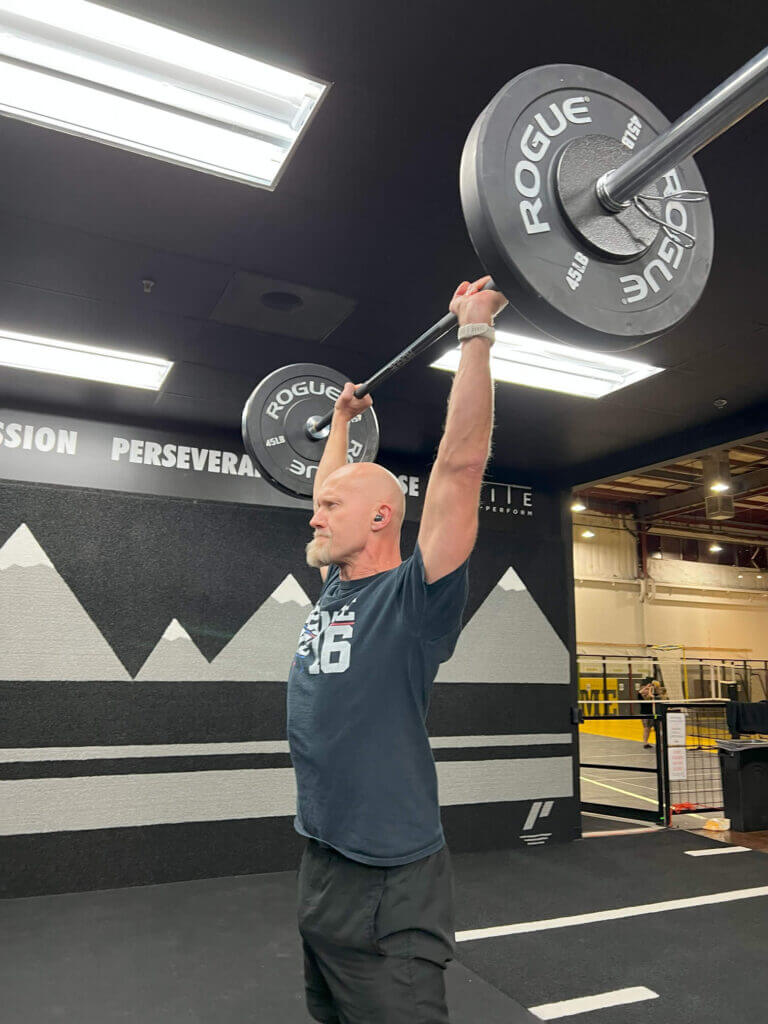
UNITE.rehab.perform
Denver's Best Sports Physical Therapy
Fit at fifty
featuring coach mark shropshire
Fitness in your 50’s is a little different than fitness in your younger years. But it doesn’t have to be radically different in my opinion. Honestly, you can recapture some of that youthfulness that just seemed to be there when you wanted it. I can’t, sitting here in front of a keyboard, write a specific recipe for it, but I can speak from a posture of learned experiences and generalities.
First – it’s important to move as well as you can. That can mean a lot of things to a lot of different people so I’ll clarify it a bit. For me, that means investing some time each day (or so) to engage in movements that we all used to learn how to move in the first place. What does that mean? Diaphragmatic breathing, laying on my stomach and nodding my head up and down and side to side. Rolling from my back to my stomach and to my back again. Rocking on all fours and occasionally crawling on my hands and knees. Sounds dumb to some people, but not everything has to be complicated in order for it to work wonders. How those things work so well is the subject for another post, but if you are interested you can take a look here. It’s these simple movements that allow me to move well. On top of that movement I add the second ingredient – strength training.

I strength train 4-6 days per week for 40-60 minutes per session. Strength training has been called the fountain of youth and in a lot of ways, research on the subject of longevity is showing that to be true. What the research is showing is that a loss of muscle mass and mobility is the primary indicator of all cause morbidity. You read that right. Get weak and stiff and you have a better chance of becoming unalive. Period, end of story. The “what” of my training consists of a couple of compound lifts done back and forth for 15-20 minutes. I follow that with some other types of lifts that are similar but different in some way for another 10-15 minutes. Then I’ll do some kind of conditioning that involves powerful anaerobic intervals on a rower, ski machine or something similar. After that I will typically consume some protein and drink a concoction of creatine and essential amino acids. Which brings us to the last ingredient – recovery and nutrition.
I treat them as one and the same as both nourish my body. One obviously nourishes it with macro and micronutrients that it needs to function. The other nourishes it with rest and allows it to repair and reset itself for another day of living. I choose lean sources of protein when I can and tend to eat vegetables for each meal. I typically eat a full meal once per day but don’t stick to a strict fasting protocol. I try to get outside in the sunshine for 15-20 minutes per day and when the weather allows, I will exercise outside. To help recover from daily training sessions I take a cold shower for 3-5 minutes. Sleep is the single most important recovery agent that one can consume, and it’s free! I usually follow a routine at the end of the day that signals to my body that it’s time to sleep. The lights in the house are dimmed and the temperature is turned down. If I watch a show or find myself on my phone, I do so with blue light blocking glasses (blue light from screens can signal the brain that it should be “up” and awake). Combined, this routine done as regularly as possible, signals to my brain and body that the day is over and it’s time to sleep.
There’s more details to all this but it’s not terribly necessary to go into it. What is pertinent is that I’ve found something that works for me and I am able to follow consistently. The effects of each ingredient on their own are certainly relevant, but when combined have an incremental and compounding effect.
Key Takeaways:
- Move well with Original Strength
- Strength train
- Eat a diet low in sugar, high in lean protein and fiber
- Get cold for 3-5 min per day
- Keep a regular sleep schedule and routine
©2020-2024 UNITE.rehab.perform LLC. All rights reserved.
UNITE.rehab.perform does not provide medical advice, diagnosis, or treatment through this website or related content. See additional information.